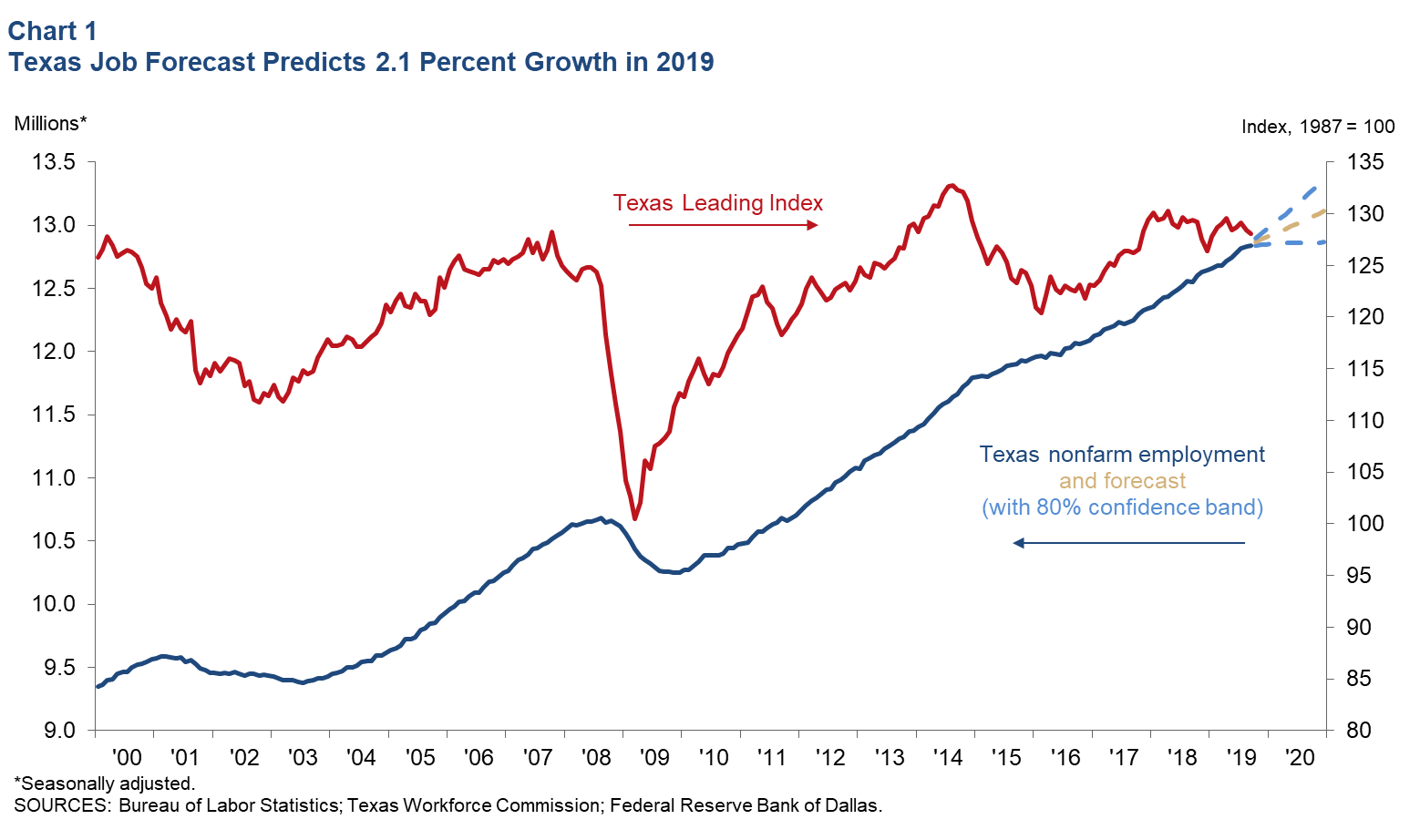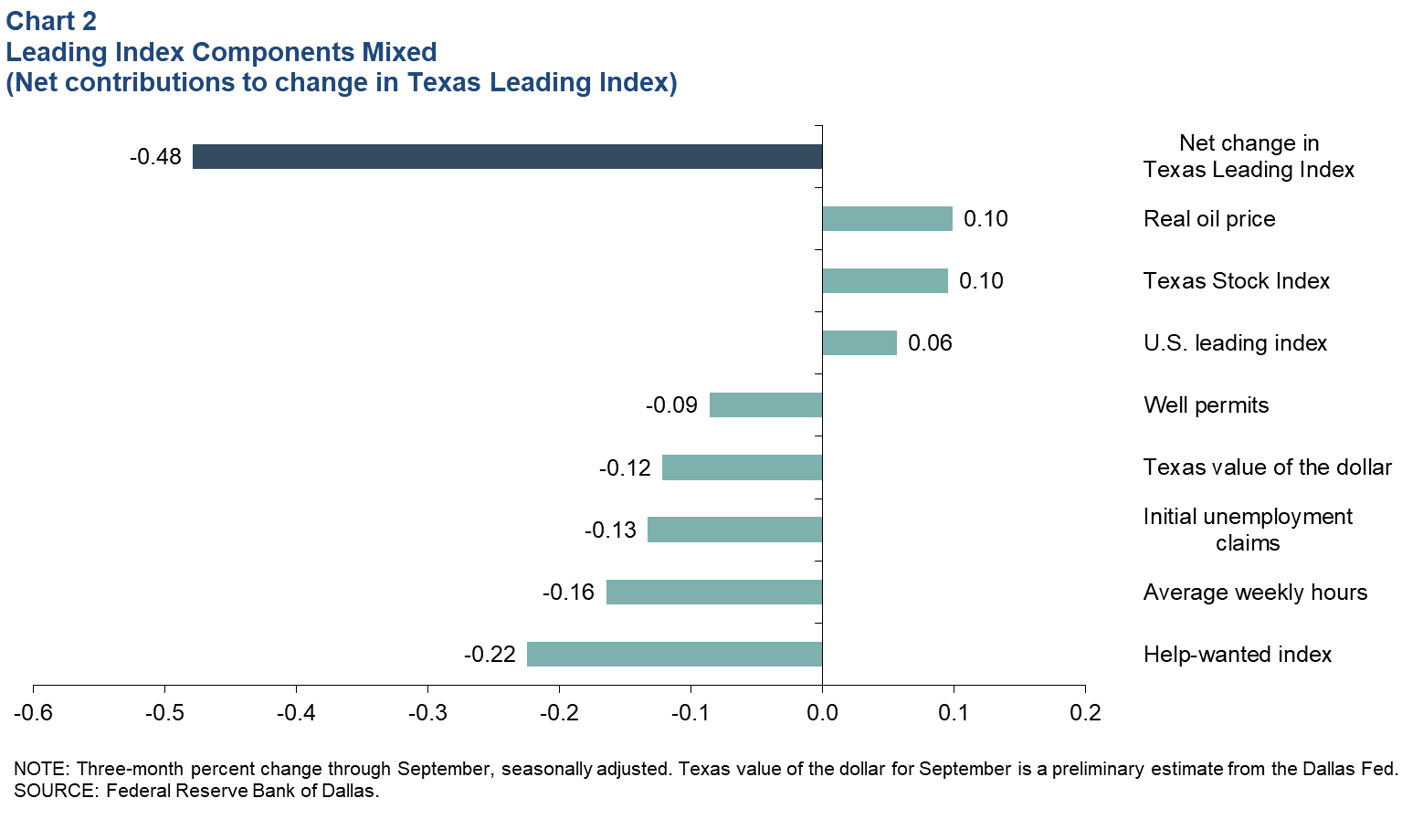Texas Employment Forecast

Incorporating September job growth of 0.7 percent and a decrease in the September leading index, the Texas Employment Forecast suggests jobs will grow 2.1 percent this year (December/December), with an 80 percent confidence band of 1.7 to 2.5 percent. Based on the forecast, 263,700 jobs will be added in the state this year, and employment in December 2019 will be 12.9 million (Chart 1).
“After strong growth in June and July, Texas jobs decelerated in August and September,” said Keith R. Phillips, Dallas Fed assistant vice president and senior economist. “Mining jobs declined at an 8.0 percent annualized rate in the third quarter. The weakness in oil and gas extraction is spilling over to other sectors such as transportation and warehousing which experienced job losses in both August and September. Manufacturing employment continues to grow at a good pace, however, in part driven by continued strength in petrochemical and refining activity. Construction activity also remains robust.”
The Dallas Fed’s Texas Leading Index declined over the three months ending in September (Chart 2). Five of the eight indicators declined, with the employment-related series—help wanted advertising, average weekly hours worked in manufacturing and new unemployment claims—showing the most weakness. An increase in the Texas value of the dollar and a decline in permits to drill new oil and gas wells also pulled down the index. Partially offsetting these declines were mild gains in the U.S. Leading Index, the stock prices of Texas companies, and the inflation-adjusted oil price.


Next release: November 15, 2019
Methodology
The Dallas Fed Texas Employment Forecast projects job growth for the calendar year and is estimated as the 12-month change in payroll employment from December to December. The forecast reported above is a point estimate with 80 percent confidence bands; in other words, the true forecast lies within the bands on Chart 1 with 80 percent probability.
The Dallas Fed Texas Employment Forecasting Model is based on a transfer function that utilizes past changes in state employment along with past changes in the Dallas Fed Texas Leading Index (TLI). Changes in the TLI have an impact on employment with a lead time of three months, and the effect dies out slowly over time. The regression coefficients on lagged changes in employment and the TLI are highly statistically significant, and the model as a whole has been accurate relative to other forecasters over the past two decades.
The forecasting model has been in use at the Dallas Fed since the early 1990s, and the employment forecast has been published in the Western Blue Chip Economic Forecast (WBCF) since 1994. Phillips and Lopez (2009) show that the model has been the most accurate in forecasting Texas job growth relative to other forecasters in the WBCF. In particular, the model had the lowest root mean squared error and has been the closest to the actual the most times (nine of the last 17 years) out of five forecasters that have consistently participated in the survey.
For more details about the model and its performance, see “An Evaluation of Real-Time Forecasting Performance Across 10 Western U.S. States,” by Keith R. Phillips and Joaquin Lopez, Journal of Economic and Social Measurement, vol. 34, no. 2–3, December 2009.
Contact Information
For more information about the Texas Employment Forecast, contact Keith Phillips at keith.r.phillips@dal.frb.org.